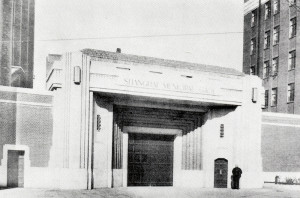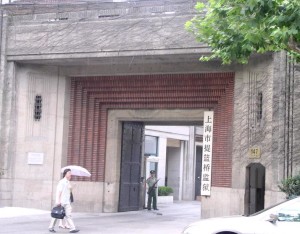Prisoners of War
- By Peter Harmsen
- 14 July, 2013
- 34 Comments
 In its heyday during the first half of the 20th century, Shanghai’s Ward Road Jail was reputed to be the world’s most populous prison, and one of its harshest. Built in 1903 to accommodate Chinese and foreigners who had broken the law in the International Settlement, it was notorious for overcrowding and violent discipline. However, the battle between China and Japan over Shanghai in the fall of 1937 was to cause a whole new level of misery for the inmates.
In its heyday during the first half of the 20th century, Shanghai’s Ward Road Jail was reputed to be the world’s most populous prison, and one of its harshest. Built in 1903 to accommodate Chinese and foreigners who had broken the law in the International Settlement, it was notorious for overcrowding and violent discipline. However, the battle between China and Japan over Shanghai in the fall of 1937 was to cause a whole new level of misery for the inmates.
The prison was located in Hongkou district in the north of Shanghai, directly in the crossfire of the warring parties. Vessels of the Japanese Imperial Navy in the Huangpu river providing artillery support for Japanese marine detachments on shore often fired indiscriminately into civilian areas, and a large number of shells landed inside the prison walls. Chinese artillery posted across the Huangpu targeting the marines also made itself guilty of several direct hits on the jail.
In the end, the prison authorities decided that evacuation was necessary. They started with the criminally insane, who would pose the greatest danger if a chance shell blew a whole in the prison wall and made escape possible. That evacuation went well. The book Shanghai 1937: Stalingrad on the Yangtze describes what happened next:
On August 22, a more comprehensive evacuation was planned to take place, but buses meant to bring 150 juvenile criminals to the Chinese district via the International Settlement were stopped by Japanese guards at the Garden Bridge. The juveniles were young and could be recruited for the Chinese war effort and they were returned to their prison. From then on, the evacuation drive nearly stopped, and weeks later, the Ward Road facility was still brimming with inmates, exposed to the deadly fire from both sides.”
War could not stop Ward Road Jail from serving its purpose. Neither could peace. After 1945 it also housed a large number of war criminals, and it has continued to serve as a prison right up to this day, under its Chinese name of Tilanqiao Jail. Now, however, Shanghai authorities are planning to have it removed. China’s Xinhua news agency reports:
A resident surnamed Wang said Tilanqiao Prison, located in Hongkou District, is just across the road from his home. While the commercial metropolis is becoming more and more glamorous, his community remains outdated due to the prison’s existence, he said. ”Of course I hope the prison will be relocated,” said an old woman surnamed Xie. “For many years, the roads have been sealed off when new inmates are taken in, and we have been disturbed by their morning exercises, which severely impacted our lives.”
According to Xinhua, the final decision to relocate the jail has not been made yet. On the one hand, authorities wish to take local complaints into consideration. On the other, the building’s status as a key relic telling an important part of Shanghai history has led a minority to advocate its preservation in some form or other.
Gu Xiaoming, a history professor with Fudan University, said he supports the relocation. “But because Tilanqiao is a historical and cultural relic, we must not get rid of the historic significance of the site while remolding it,” Gu said. “Instead, we need to find a way to look after both the social and commercial interests.”

 Copyright © 2025
Copyright © 2025
Leave a Reply